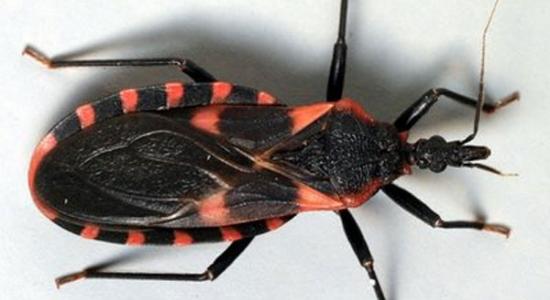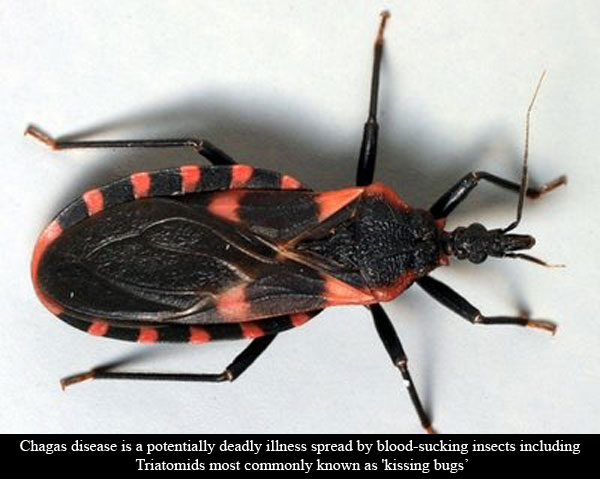New AIDS: Fear Rules the Roost
 As medical history the world over has always been linked to political maneuvering, it has yet to be seen, and it’s the duty of all concerned to see, whether the disease might not be used as a springboard for anti-immigrant hysteria.
As medical history the world over has always been linked to political maneuvering, it has yet to be seen, and it’s the duty of all concerned to see, whether the disease might not be used as a springboard for anti-immigrant hysteria.
It is believed that Charles Darwin, in pursuit of fossiles to prove his theory of evolution, was bitten by an insect which carried what is now widely called as the new AIDS. Those who may attach taboos and social conceptions regarding sexuality to the word AIDS may conjure up the images of promiscuity to the new AIDS as well. Considered ironically as a believer in Christian values, Darwin can at least be spared the allegation. The new AIDS is similar to the AIDS only in characteristics. There is not the meddling of HIV+, which is sexually transmitted.
That you have contracted Chagas Disease, which is what the new AIDS is more scientifically called, can only be known at a later stage. In the editorial of PLOS’ ‘Neglected Tropical Diseases’, a peer-reviewed open-access journal published by the Public Library of Science, researchers describe the similarities between the diseases the following way:
‘There are a number of striking similarities between people living with Chagas disease and people living with HIV/AIDS, particularly for those with HIV/AIDS who contracted the disease in the first two decades of the HIV/AIDS epidemic. Both diseases are health disparities, disproportionately affecting people living in poverty. Both are chronic conditions requiring prolonged treatment courses: a lifetime of antiretroviral therapy for HIV/AIDS patients, and one to three months of therapy for those with Chagas disease. Treatment for HIV/AIDS is lifesaving, although it seldom if ever results in cure, while for Chagas disease, the treatment has proven efficacy only for the acute stages of the infection or in children up to 12 years of age during the early chronic phase of the infection. For both diseases the treatment is expensive—in the case of Chagas disease, the expected cost of treatment per patient year is $1,028, with lifetime costs averaging $11,619 per patient. Exacerbating costs, Chagas disease itself is a serious opportunistic infection of people living with HIV/AIDS, and is associated with meningoencephalitis, cerebral lesions, and high mortality. As with patients in the first two decades of the HIV/AIDS epidemic, most patients with Chagas disease do not have access to health care facilities. A recent analysis indicates that many patients do not have access to the essential medicines for Chagas disease, in particular, the first line of therapy, the drug benznidazole. According to Médecins Sans Frontières (MSF, Doctors Without Borders), many highly endemic countries, including Paraguay and Bolivia, face acute shortages of benznidazole, forcing thousands of newly diagnosed patients to postpone treatment. Both diseases are also highly stigmatizing, a feature that for Chagas disease further complicates access to benznidazole and other essential medicines, as well as access to serodiagnosis and medical counseling. For some individuals with T. cruzi living in the US, immigration status presents an additional challenge to seeking care and prevention services. Just as stigma due to sexual orientation has been a barrier to HIV care and prevention, especially in the beginning of the epidemic, immigration status may function as a deterrent to Chagas disease care and prevention.’
(See for further reference: http://www.plosntds.org/article/info:doi/10.1371/journal.pntd.0001498)
The editorial continues: ‘There are additional parallels. Chagas disease has emerged as an important blood transfusion–related risk throughout the Americas just as HIV/AIDS did in the early 1980s, prior to the implementation of widespread blood screening and testing. Moreover, mother-to-child transmission leading to congenital Chagas disease and other adverse neonatal outcomes is increasingly recognized.’
Named after the Brazilian doctor who discovered it in 1909, Chagas disease is a potentially deadly illness spread by blood-sucking insects including Triatomids most commonly known as ‘kissing bugs.’
There is a paranoia surrounding the disease. The paranoia is more political than medical. The disease was earlier spotted in Latin America and is believed to have spread to the US via immigrant population. The editorial describes the factor in the following words:
Neglected tropical diseases (NTDs) are among the most common conditions afflicting the estimated 99 million people who live on less than US$2 per day in the Latin American and Caribbean (LAC) region . Almost all of the “bottom 100 million” living in the Americas suffer from at least one NTD, and according to some estimates, the NTDs cause a burden of disease in the LAC region that closely approximates or even exceeds that resulting from HIV/AIDS.
The journal, which is an initiative of virologists, epidemiologists and infectious-disease specialists, continues: ‘Immigration from endemic regions is widespread; for example, there are Brazilian immigrants in Portugal and Bolivian immigrants in Spain, and currently, there are an estimated 100,000 or more Latin American immigrants living in France… Chagasic heart disease has been reported in Brazilian immigrants of Japanese origin in Japan, and the seroprevalence of Chagas disease among Bolivian women in Barcelona has been determined to be 3.4 percent.
‘
As medical history the world over has always been linked to political maneuvering, it has yet to be seen, and it’s the duty of all concerned to see, whether the disease is used as a springboard for anti-immigrant hysteria. Rather than stemming the insects which transmit the disease, it might be used as a ploy to stem immigrants.























Connect
Connect with us on the following social media platforms.